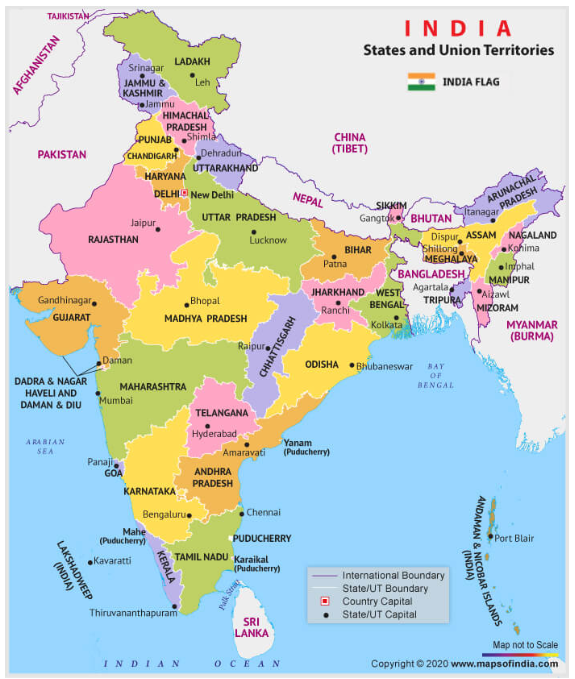India encompasses an expansive territory spanning approximately 3.2 million square kilometres. Its geographical expanse extends from the towering Himalayas in the North to the southern tip of Kanyakumari, covering a distance of roughly 3,200 kilometres from north to south. Similarly, the country spans around 2,900 kilometres from the eastern state of Arunachal Pradesh to the western state of Gujarat. Bounded by three major bodies of water, India is surrounded by the Arabian Sea to the West, the Bay of Bengal to the East, and the Indian Ocean to the South
IN BRIEF- GEOGRAPHICAL DIVISION
In the northern region, the Himalayas are segmented into three expansive parallel ranges, namely the Great Himalayas or Himadri, the Middle Himalayas or Himachal, and the Shiwalik range. Stretching to the south of these Himalayan ranges lies the vast expanse of the northern Indian plains.
- In the western part of India, the Great Indian Desert can be found.
- South of the northern plains, there is the peninsular plateau.
- The Aravali Hills, recognized as one of the oldest mountain ranges globally, contribute to the topography of the region.
- On the western frontier of the plateau, one encounters the Western Ghats, also known as the Sahyadris.
- Coastal plains are nestled between the Western Ghats in the west and the Eastern Ghats in the east.
- Major rivers, such as the Mahanadi, Godavari, Krishna, and Kaveri, drain into the Bengal Bay.
- The Sunderban Delta, a notable geographical feature, is formed at the confluence of the Ganga and Brahmaputra rivers with the Bay of Bengal.
The Lakshadweep islands are situated in the Arabian Sea, while the Andaman and Nicobar Islands are located to the southeast of the Indian mainland.

ADMINISTRATIVE DIVISION
- India comprises 28 states and 8 Union territories, with Delhi serving as the capital city. Rajasthan holds the distinction of being the largest state in terms of area, while Goa claims the title of the smallest state.
- In a recent development, the state of Jammu & Kashmir has undergone reorganisation, leading to the creation of two Union territories: Ladakh and Jammu & Kashmir.
- Telangana was also separated from Andhra Pradesh as an independent state.
- Furthermore, a recent administrative change involves the amalgamation of Dadra and Nagar Haveli with Daman and Diu, resulting in the formation of a single Union territory.

